Dangers in the Philippines
The Philippines has many beautiful places to visit, but travelers should stay alert to potential dangers
This archipelago boasts breathtaking landscapes, bustling cities, and a tapestry of traditions that enchant travelers from all corners of the globe. However, like any sought-after destination, safety concerns can arise, prompting visitors to question the risks and measures in place to ensure their well-being. Various factors influence this concept, including crime rates, natural disasters, health risks, and political stability. In the Philippines, these dynamics intersect, shaping the safety landscape for both residents and tourists. One of the primary concerns for travelers is crime. 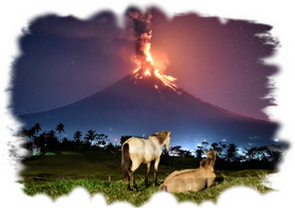 While the vast majority of visits to the Philippines are trouble-free, it is essential to remain vigilant, particularly in urban areas. Petty theft, such as pick-pocketing and bag snatching, can occur, especially in crowded places like markets and public transportation hubs. Both tourists and locals are advised to secure their belongings and refrain from openly displaying expensive items. In recent years, the Philippine government has implemented measures to address these crimes, including increased police presence in tourist areas and enhanced surveillance systems. Moving on to other safety risks, the Philippines sits along the Pacific Ring of Fire, making it prone to earthquakes, typhoons, and volcanic eruptions. These natural phenomena pose significant risks to both residents and visitors alike.
While the vast majority of visits to the Philippines are trouble-free, it is essential to remain vigilant, particularly in urban areas. Petty theft, such as pick-pocketing and bag snatching, can occur, especially in crowded places like markets and public transportation hubs. Both tourists and locals are advised to secure their belongings and refrain from openly displaying expensive items. In recent years, the Philippine government has implemented measures to address these crimes, including increased police presence in tourist areas and enhanced surveillance systems. Moving on to other safety risks, the Philippines sits along the Pacific Ring of Fire, making it prone to earthquakes, typhoons, and volcanic eruptions. These natural phenomena pose significant risks to both residents and visitors alike. 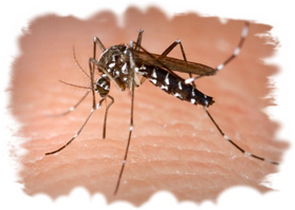 Overall, while the Philippines offers a wealth of beauty and cultural experiences, it is important for travelers to be aware of potential safety concerns and take necessary precautions to ensure a safe and enjoyable visit to this captivating destination. The typhoon season in the Philippines typically occurs from June to October, bringing heavy rainfall, lightning, strong winds, and potential flooding. In addition, seismic activity remains a constant concern, with earthquakes sporadically affecting the archipelago. Despite these challenges, the Philippine government has made significant progress in disaster preparedness and response. Measures such as early warning systems, evacuation drills, and infrastructure improvements are crucial to mitigating the impact of natural disasters and safeguarding communities. Like many tropical destinations, the Philippines also poses health risks, including mosquito-borne diseases like dengue fever and malaria. Travelers are strongly advised to take precautions, such as using insect repellent, wearing long sleeves and pants, and sleeping under mosquito nets, especially in rural areas. Political stability is another key factor in ensuring overall safety and security. While the Philippines has experienced periods of political unrest and social tensions, the country remains relatively stable for tourism. However, travelers should stay informed about current events and adhere to any advisories or restrictions issued by their home country's government. Despite these challenges, the Philippines is relatively safe and continues to attract millions of tourists each year, drawn by its natural beauty, cultural heritage, and warm hospitality.
Overall, while the Philippines offers a wealth of beauty and cultural experiences, it is important for travelers to be aware of potential safety concerns and take necessary precautions to ensure a safe and enjoyable visit to this captivating destination. The typhoon season in the Philippines typically occurs from June to October, bringing heavy rainfall, lightning, strong winds, and potential flooding. In addition, seismic activity remains a constant concern, with earthquakes sporadically affecting the archipelago. Despite these challenges, the Philippine government has made significant progress in disaster preparedness and response. Measures such as early warning systems, evacuation drills, and infrastructure improvements are crucial to mitigating the impact of natural disasters and safeguarding communities. Like many tropical destinations, the Philippines also poses health risks, including mosquito-borne diseases like dengue fever and malaria. Travelers are strongly advised to take precautions, such as using insect repellent, wearing long sleeves and pants, and sleeping under mosquito nets, especially in rural areas. Political stability is another key factor in ensuring overall safety and security. While the Philippines has experienced periods of political unrest and social tensions, the country remains relatively stable for tourism. However, travelers should stay informed about current events and adhere to any advisories or restrictions issued by their home country's government. Despite these challenges, the Philippines is relatively safe and continues to attract millions of tourists each year, drawn by its natural beauty, cultural heritage, and warm hospitality.
Kidnapping
One must understand there are some life-threatening risks in the Philippines like all other countries. Of these the highest includes visiting or living in some areas of Mindanao and anywhere in the Sulu Archipelago. These areas which are located in the southern Philippines and are known for their stunning landscapes, and diverse cultures, but also their dangers for western visitors. 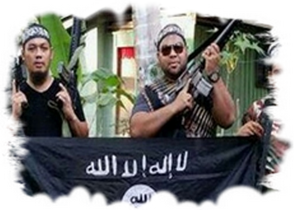 While these regions offer a desired scenery, there is a significant risk associated with visiting for Western foreigners. These very risky areas are primarily made up of the Islamic religious groups and has long been a hot spot for insurgent activities. Factions such as the Abu Sayyaf Group (ASG) and the Bangsamoro Islamic Freedom Fighters (BIFF) are known for their involvement in militant activities.These groups have been responsible for numerous acts of violence, including bombings, kidnappings, murders, and attacks on government forces. Their presence creates a constant state of tension and unpredictability in the region. The Sulu Sea, which separates the Sulu Archipelago from Borneo, is notorious for piracy. Piracy in this region often involves kidnappings for ransom, which poses significant risks to both local fishermen and international maritime traffic.
While these regions offer a desired scenery, there is a significant risk associated with visiting for Western foreigners. These very risky areas are primarily made up of the Islamic religious groups and has long been a hot spot for insurgent activities. Factions such as the Abu Sayyaf Group (ASG) and the Bangsamoro Islamic Freedom Fighters (BIFF) are known for their involvement in militant activities.These groups have been responsible for numerous acts of violence, including bombings, kidnappings, murders, and attacks on government forces. Their presence creates a constant state of tension and unpredictability in the region. The Sulu Sea, which separates the Sulu Archipelago from Borneo, is notorious for piracy. Piracy in this region often involves kidnappings for ransom, which poses significant risks to both local fishermen and international maritime traffic. 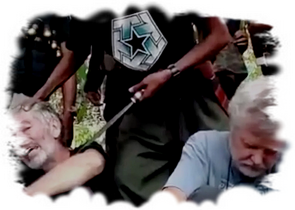 The presence of armed factions involved in piracy exacerbates the security situation in all of the waters surrounding the Sulu Archipelago. Ethnic and clan-based conflicts are also prevalent in this location. These conflicts can escalate quickly, leading to violent confrontations between different groups. Such local disputes can be difficult to predict and often affect both residents and visitors. Criminal groups and insurgents often target foreigners and wealthy locals for kidnapping attempts. These kidnappings can lead to extended periods of captivity and high ransom demands. Even though the Philippine government and military are actively working to combat these threats, the risk still remains significant. Violent crime, including armed robbery and assault, are higher in the hazardous areas of Mindanao and the Sulu Archipelago. Travelers are often advised to exercise extreme caution and avoid these areas. It is crucial for individuals considering visiting or residing in these areas to stay updated on advisories from their home country and follow their recommended precautions. Let's begin with the crucial threat of kidnapping and its underlying causes. We have to gain some understanding so we will start with the The Marawi Seige. For over three decades, Islamic extremist factions such as the notorious Abu Sayyaf Group have been striving to establish an independent Islamic state on the island of Mindanao. Abu Sayyaf receives financial backing from the Islamic State (ISIS) and other terrorist organizations, enabling them to expand their influence globally.
The presence of armed factions involved in piracy exacerbates the security situation in all of the waters surrounding the Sulu Archipelago. Ethnic and clan-based conflicts are also prevalent in this location. These conflicts can escalate quickly, leading to violent confrontations between different groups. Such local disputes can be difficult to predict and often affect both residents and visitors. Criminal groups and insurgents often target foreigners and wealthy locals for kidnapping attempts. These kidnappings can lead to extended periods of captivity and high ransom demands. Even though the Philippine government and military are actively working to combat these threats, the risk still remains significant. Violent crime, including armed robbery and assault, are higher in the hazardous areas of Mindanao and the Sulu Archipelago. Travelers are often advised to exercise extreme caution and avoid these areas. It is crucial for individuals considering visiting or residing in these areas to stay updated on advisories from their home country and follow their recommended precautions. Let's begin with the crucial threat of kidnapping and its underlying causes. We have to gain some understanding so we will start with the The Marawi Seige. For over three decades, Islamic extremist factions such as the notorious Abu Sayyaf Group have been striving to establish an independent Islamic state on the island of Mindanao. Abu Sayyaf receives financial backing from the Islamic State (ISIS) and other terrorist organizations, enabling them to expand their influence globally. 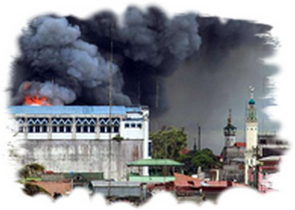 These groups seek to secede from the predominantly Catholic Philippines and establish their own caliphate or governing body. Their tactics involve perpetrating acts of violence and instilling fear in the population. They have targeted and killed numerous law enforcement officers, military personnel, and civilians, besieged cities, detonated explosives in public areas, and carried out numerous abductions. Notably, their kidnappings often focus on tourists or individuals of high value, as these incidents serve as a means to finance their operations and procure weapons to advance their agenda. Historically, they have successfully negotiated substantial ransoms in exchange for the safe release of their captives. However, if the ransom was not paid in a timely manner, the victims would face the grim fate of being killed, often through be-headings. In recent times, the Philippine government deployed a significant number of military forces to the Island of Mindanao area to combat and eliminate these terrorists, leading to the siege of Marawi City. The assault on Marawi City occurred shortly after Philippine security forces targeted the mountain hideout of Isnilon Hapilon in 2017.
These groups seek to secede from the predominantly Catholic Philippines and establish their own caliphate or governing body. Their tactics involve perpetrating acts of violence and instilling fear in the population. They have targeted and killed numerous law enforcement officers, military personnel, and civilians, besieged cities, detonated explosives in public areas, and carried out numerous abductions. Notably, their kidnappings often focus on tourists or individuals of high value, as these incidents serve as a means to finance their operations and procure weapons to advance their agenda. Historically, they have successfully negotiated substantial ransoms in exchange for the safe release of their captives. However, if the ransom was not paid in a timely manner, the victims would face the grim fate of being killed, often through be-headings. In recent times, the Philippine government deployed a significant number of military forces to the Island of Mindanao area to combat and eliminate these terrorists, leading to the siege of Marawi City. The assault on Marawi City occurred shortly after Philippine security forces targeted the mountain hideout of Isnilon Hapilon in 2017. 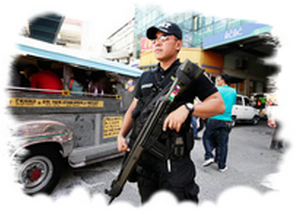 Hapilon, a longstanding leader of Abu Sayyaf, also known as the "Father of the Sword," was infamous for his involvement in kidnappings and be-headings. The Philippine military reported that Hapilon was likely injured during the raids but managed to escape to Marawi City, where he aligned with the Maute group to orchestrate the siege. The clashes between Philippine forces and the Islamic State-linked Maute group resulted in the deaths of nearly 300 individuals, following the seizure of Marawi City on May 23, 2017. This attack served as a stark warning that the Islamic State was establishing a foothold in Southeast Asia. Subsequently, the majority of the city's 200,000 residents fled in fear for their safety. The aftermath of the battle has left the town in complete devastation. Both sides are pointing fingers at each other for the destruction caused. However, since the conflict, the incidents of kidnappings in the area have significantly decreased. This can be attributed to the ongoing military presence and their control in the region, as well as the successful elimination of terrorist many elements. At this time, most of the kidnappings in the Philippines involve Chinese nationals, particularly in or around Manila. These criminal activities are often carried out other Chinese individuals. This activity is usually related to Philippine Off Shore Gaming (POGO). There is often a great deal of human trafficking and forced labor involved. Despite these trends, the risk of being kidnapped in the southern regions of the Philippines remains high. Therefore, travel advisories issued by various countries continue to advise against visiting these extremely perilous areas. They are considered some of the most dangerous areas in the world!
Hapilon, a longstanding leader of Abu Sayyaf, also known as the "Father of the Sword," was infamous for his involvement in kidnappings and be-headings. The Philippine military reported that Hapilon was likely injured during the raids but managed to escape to Marawi City, where he aligned with the Maute group to orchestrate the siege. The clashes between Philippine forces and the Islamic State-linked Maute group resulted in the deaths of nearly 300 individuals, following the seizure of Marawi City on May 23, 2017. This attack served as a stark warning that the Islamic State was establishing a foothold in Southeast Asia. Subsequently, the majority of the city's 200,000 residents fled in fear for their safety. The aftermath of the battle has left the town in complete devastation. Both sides are pointing fingers at each other for the destruction caused. However, since the conflict, the incidents of kidnappings in the area have significantly decreased. This can be attributed to the ongoing military presence and their control in the region, as well as the successful elimination of terrorist many elements. At this time, most of the kidnappings in the Philippines involve Chinese nationals, particularly in or around Manila. These criminal activities are often carried out other Chinese individuals. This activity is usually related to Philippine Off Shore Gaming (POGO). There is often a great deal of human trafficking and forced labor involved. Despite these trends, the risk of being kidnapped in the southern regions of the Philippines remains high. Therefore, travel advisories issued by various countries continue to advise against visiting these extremely perilous areas. They are considered some of the most dangerous areas in the world!
Do not go into or near the following areas of Mindanao or the Sulu Archipelago
Sulu Archipelago
- Basilan
- Sulu
- Tawi-Tawi
- Western and Central Mindanao
Bangsamoro Autonomous Region in Muslim Mindanao
- Lanao del Sur
- Maguindanao
Northern Mindanao
- Bukidnon
- Camiguin
- Lanao del Norte
- Misamis Occidental
- Misamis Oriental
Soccsksargen
- Cotabato
- Sarangani
- South Cotabato
- Sultan Kudarat
Zamboanga Peninsula
- Zamboanga del Norte
- Zamboanga del Sur
- Zamboanga Sibugay
Caraga
- Agusan del Norte
- Agusan del Sur
- Surigao del Norte, excluding Siargao Island
- Surigao del Sur
Davao
- Davao de Oro
- Davao del Sur, excluding Davao City
- Davao Occidental
- Davao Oriental
The US State Department consider these areas safe at the present time:
- Davao City
- Davao del Norte Province
- Siargao Island
- The Dinagat Islands
Drugs
The Philippines is currently facing a complex and deeply rooted issue - drugs. The convergence of poverty, crime, and close proximity to China has made the drug problem in the country a persistent challenge, drawing attention both domestically and internationally.  Understanding the nature of this issue is crucial. The struggle with drugs in the Philippines is not a recent development. Drug abuse and trafficking have plagued the nation for decades. In the 1970s and 1980s, the emergence of the shabu (methamphetamine) trade led to a surge in addiction and related crimes. Various administrations have made efforts to address the issue through law enforcement, rehabilitation programs, and international cooperation. However, progress has been impeded by factors such as corruption, inadequate resources, and societal stigmatization. In recent years, the drug problem in the Philippines has garnered international attention due to the controversial anti-drug campaign initiated by President Rodrigo Duterte.
Understanding the nature of this issue is crucial. The struggle with drugs in the Philippines is not a recent development. Drug abuse and trafficking have plagued the nation for decades. In the 1970s and 1980s, the emergence of the shabu (methamphetamine) trade led to a surge in addiction and related crimes. Various administrations have made efforts to address the issue through law enforcement, rehabilitation programs, and international cooperation. However, progress has been impeded by factors such as corruption, inadequate resources, and societal stigmatization. In recent years, the drug problem in the Philippines has garnered international attention due to the controversial anti-drug campaign initiated by President Rodrigo Duterte. 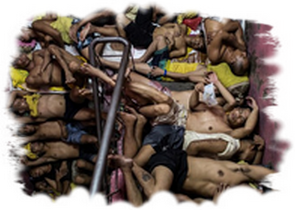 Since assuming office in 2016, Duterte has pursued an aggressive approach known as the war on drugs, characterized by widespread police operations and extrajudicial killings targeting suspected drug offenders. While the government touts some success in reducing crime and drug use, critics argue that the campaign has led to severe human rights abuses, lack of due process, and a culture of impunity. The approach taken by the Philippines to combat drugs is facing numerous challenges. Firstly, the heavy reliance on punitive measures has raised concerns about violations of human rights and has eroded the rule of law. Secondly, the focus on law enforcement has overshadowed efforts to address the root economic causes of drug abuse, such as poverty, lack of education, and limited rehabilitation opportunities. Additionally, the stigma surrounding drug addiction impedes efforts to provide support and treatment to those affected and their families. A foreigner should never associate with the drug trade in the Philippines as doing so could result in being deported and blacklisted, a long term stay in a horrific and over crowded prison, or even being killed.
Since assuming office in 2016, Duterte has pursued an aggressive approach known as the war on drugs, characterized by widespread police operations and extrajudicial killings targeting suspected drug offenders. While the government touts some success in reducing crime and drug use, critics argue that the campaign has led to severe human rights abuses, lack of due process, and a culture of impunity. The approach taken by the Philippines to combat drugs is facing numerous challenges. Firstly, the heavy reliance on punitive measures has raised concerns about violations of human rights and has eroded the rule of law. Secondly, the focus on law enforcement has overshadowed efforts to address the root economic causes of drug abuse, such as poverty, lack of education, and limited rehabilitation opportunities. Additionally, the stigma surrounding drug addiction impedes efforts to provide support and treatment to those affected and their families. A foreigner should never associate with the drug trade in the Philippines as doing so could result in being deported and blacklisted, a long term stay in a horrific and over crowded prison, or even being killed.
Robbery
Unfortunately, the islands are also facing a significant challenge that poses a threat to their social cohesion: robbery. Despite efforts to promote economic growth, the specter of theft continues to cast a shadow over individuals, businesses, and the overall economy. Robbery in the Philippines takes on various forms, ranging from petty crimes on the streets to well-coordinated heists targeting businesses and affluent individuals. Major urban hubs like Manila and Cebu are particularly vulnerable to these criminal activities, given their high population density and bustling commercial areas. 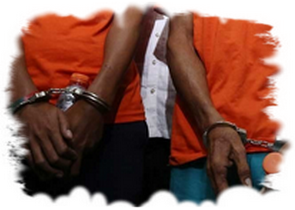 Street-level theft, characterized by snatch-and-grab incidents and pick pocketing, is a common occurrence in crowded public spaces and transportation hubs. Both tourists and locals are frequent targets, with valuables such as smartphones, wallets, and jewelry being the primary objects of desire for opportunistic thieves. On a larger scale, organized robbery operations pose a significant threat to businesses and financial institutions. While bank robberies are relatively uncommon, they draw significant attention due to their boldness and potential for substantial losses. Criminal syndicates, equipped with advanced tools and tactics, orchestrate these heists, often leaving authorities struggling to cope with the aftermath. The impact of robbery goes beyond the immediate loss of property or assets. Victims of theft not only suffer financial setbacks but also experience emotional distress and a diminished sense of security. Tourists may have reservations about visiting the country, fearing for their safety and belongings, which can have a negative impact on the tourism industry, a crucial component of the Philippine economy. While concerns about robbery are valid, it is important to note that such incidents are relatively rare when precautions are taken and preventative measures are implemented.
Street-level theft, characterized by snatch-and-grab incidents and pick pocketing, is a common occurrence in crowded public spaces and transportation hubs. Both tourists and locals are frequent targets, with valuables such as smartphones, wallets, and jewelry being the primary objects of desire for opportunistic thieves. On a larger scale, organized robbery operations pose a significant threat to businesses and financial institutions. While bank robberies are relatively uncommon, they draw significant attention due to their boldness and potential for substantial losses. Criminal syndicates, equipped with advanced tools and tactics, orchestrate these heists, often leaving authorities struggling to cope with the aftermath. The impact of robbery goes beyond the immediate loss of property or assets. Victims of theft not only suffer financial setbacks but also experience emotional distress and a diminished sense of security. Tourists may have reservations about visiting the country, fearing for their safety and belongings, which can have a negative impact on the tourism industry, a crucial component of the Philippine economy. While concerns about robbery are valid, it is important to note that such incidents are relatively rare when precautions are taken and preventative measures are implemented.
Natural Disasters
The Philippines is a nation that faces frequent challenges from the forces of nature. Despite being blessed with fertile soils, abundant marine resources, and a tropical climate, the archipelago is vulnerable to a wide range of natural disasters, including typhoons and earthquakes. These calamities have played a significant role in shaping the resilience and fortitude of both the Filipino people and expatriates living in the country. Typhoons are a common occurrence in the Philippines, largely due to its location in the Pacific Typhoon Belt known as Typhoon Alley. 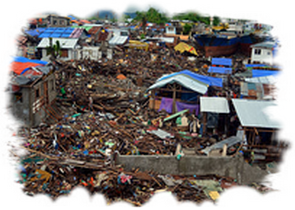 Each year, an average of 20 tropical cyclones enter the Philippine Area of Responsibility (PAR), bringing with them heavy rains, strong winds, and destructive storm surges. Of these 20 typhoons, around 8 or 9 make landfall annually. Among the most notorious of these cyclones is Haiyan, locally known as Yolanda, which devastated the country in 2013, leaving behind a path of destruction unmatched in recent memory. Situated within the Pacific Ring of Fire, the Philippines is also at risk of underwater earthquakes and volcanic eruptions, which can potentially trigger tsunamis. While less frequent than typhoons and earthquakes, tsunamis pose a significant threat to coastal communities, necessitating ongoing vigilance and preparedness efforts.
Each year, an average of 20 tropical cyclones enter the Philippine Area of Responsibility (PAR), bringing with them heavy rains, strong winds, and destructive storm surges. Of these 20 typhoons, around 8 or 9 make landfall annually. Among the most notorious of these cyclones is Haiyan, locally known as Yolanda, which devastated the country in 2013, leaving behind a path of destruction unmatched in recent memory. Situated within the Pacific Ring of Fire, the Philippines is also at risk of underwater earthquakes and volcanic eruptions, which can potentially trigger tsunamis. While less frequent than typhoons and earthquakes, tsunamis pose a significant threat to coastal communities, necessitating ongoing vigilance and preparedness efforts. 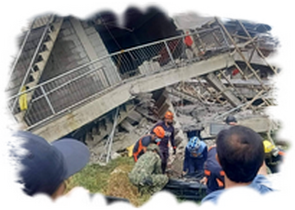 The Philippines' rugged terrain and heavy rainfall make it highly vulnerable to landslides and flash floods, especially during the typhoon season. Deforestation and improper land use worsen these risks, leaving communities exposed to the destructive effects of cascading debris and rushing waters. Additionally, the country is no stranger to seismic activity, experiencing frequent earthquakes of varying magnitudes due to the movement of tectonic plates beneath its surface. One of the most devastating earthquakes in recent history struck in 1990, when a 7.7 magnitude quake shook the island of Luzon, resulting in widespread destruction and loss of life. With more than 20 active volcanoes, the Philippines is among the most volcanically active nations globally. Mount Pinatubo, in particular, gained notoriety for its cataclysmic eruption in 1991, which stands as one of the largest volcanic eruptions of the 20th century. The eruption released ash and sulfur dioxide into the atmosphere, leading to a temporary drop in global temperatures. Despite facing a recurring series of natural disasters, the Filipino spirit remains resilient.
The Philippines' rugged terrain and heavy rainfall make it highly vulnerable to landslides and flash floods, especially during the typhoon season. Deforestation and improper land use worsen these risks, leaving communities exposed to the destructive effects of cascading debris and rushing waters. Additionally, the country is no stranger to seismic activity, experiencing frequent earthquakes of varying magnitudes due to the movement of tectonic plates beneath its surface. One of the most devastating earthquakes in recent history struck in 1990, when a 7.7 magnitude quake shook the island of Luzon, resulting in widespread destruction and loss of life. With more than 20 active volcanoes, the Philippines is among the most volcanically active nations globally. Mount Pinatubo, in particular, gained notoriety for its cataclysmic eruption in 1991, which stands as one of the largest volcanic eruptions of the 20th century. The eruption released ash and sulfur dioxide into the atmosphere, leading to a temporary drop in global temperatures. Despite facing a recurring series of natural disasters, the Filipino spirit remains resilient.
Civil Unrest
In the Philippines, a stark reality exists, one marred by sporadic episodes of civil unrest. To fully grasp the current landscape of civil unrest in the Philippines, one must first acknowledge the nation's tumultuous past. Centuries of colonization, authoritarian rule, and economic inequality have left lasting imprints on Philippine society. From the Spanish conquest to the Japanese occupation and the era of martial law under Ferdinand Marcos, periods of unrest have punctuated the nation's journey towards self-determination. In contemporary times, civil unrest in the Philippines often stems from a myriad of factors, including political dissatisfaction, economic inequity, and social injustice. 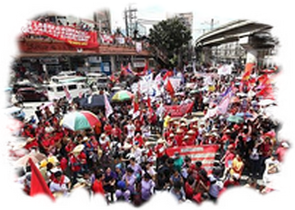 Government policies, perceived corruption, and human rights violations frequently serve as catalysts for public outcry, leading to protests, demonstrations, and at times, more radical forms of dissent. The political landscape of the Philippines is characterized by polarization, with competing ideologies, families, and interests vying for power and influence. Instances of electoral fraud, impunity among political elites, and the erosion of democratic institutions have contributed to public disillusionment and cynicism. In the current volatile climate, civil unrest has become a powerful tool for expressing dissent and holding those in positions of authority accountable. Despite notable economic growth in recent years, the benefits of development have not been equitably distributed among the population. Widespread poverty, high unemployment rates, and a growing wealth disparity continue to fuel social tensions and foster resentment towards the ruling class. In a country as diverse as the Philippines, injustice manifests in various forms, including discrimination based on ethnicity, religion, or gender, as well as the marginalization of indigenous groups and rural communities.
Government policies, perceived corruption, and human rights violations frequently serve as catalysts for public outcry, leading to protests, demonstrations, and at times, more radical forms of dissent. The political landscape of the Philippines is characterized by polarization, with competing ideologies, families, and interests vying for power and influence. Instances of electoral fraud, impunity among political elites, and the erosion of democratic institutions have contributed to public disillusionment and cynicism. In the current volatile climate, civil unrest has become a powerful tool for expressing dissent and holding those in positions of authority accountable. Despite notable economic growth in recent years, the benefits of development have not been equitably distributed among the population. Widespread poverty, high unemployment rates, and a growing wealth disparity continue to fuel social tensions and foster resentment towards the ruling class. In a country as diverse as the Philippines, injustice manifests in various forms, including discrimination based on ethnicity, religion, or gender, as well as the marginalization of indigenous groups and rural communities. 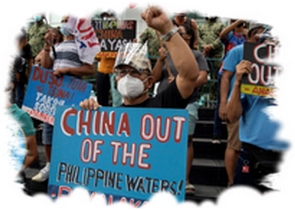 Issues such as land seizures, forced evictions, and environmental degradation further exacerbate existing tensions, sparking grassroots movements and advocacy campaigns aimed at safeguarding the rights and dignity of the most vulnerable members of society. In an age characterized by digital interconnectedness, social media platforms have emerged as potent tools for mobilization and activism. Filipinos, particularly the younger generation, leverage social media to coordinate protests, disseminate information, and amplify their voices on a wide range of issues, from political corruption to human rights violations. However, the unregulated nature of online discourse also enables the spread of misinformation and propaganda, deepening social rifts and complicating efforts to foster consensus and enact meaningful change. It is important to note that it is illegal for any foreign national to participate in or support any form of civil unrest in the Philippines. Engaging in such activities could lead to your blacklisting and permanent expulsion from the country.
Issues such as land seizures, forced evictions, and environmental degradation further exacerbate existing tensions, sparking grassroots movements and advocacy campaigns aimed at safeguarding the rights and dignity of the most vulnerable members of society. In an age characterized by digital interconnectedness, social media platforms have emerged as potent tools for mobilization and activism. Filipinos, particularly the younger generation, leverage social media to coordinate protests, disseminate information, and amplify their voices on a wide range of issues, from political corruption to human rights violations. However, the unregulated nature of online discourse also enables the spread of misinformation and propaganda, deepening social rifts and complicating efforts to foster consensus and enact meaningful change. It is important to note that it is illegal for any foreign national to participate in or support any form of civil unrest in the Philippines. Engaging in such activities could lead to your blacklisting and permanent expulsion from the country.
Scams
Scams in the Philippines have seen a worrying surge in recent years, fueled by advancements in communication technology and the widespread use of the internet and social media platforms. Scammers in the Philippines employ diverse methods to ensnare their victims. The consequences of falling victim to scams can be devastating, both financially and emotionally. Many victims suffer significant financial losses, sometimes resulting in crippling debt or financial ruin. Moreover, the emotional toll of being deceived and manipulated can be profound, leading to feelings of shame, guilt, and mistrust. This is a shame because there are a few bad apples, hurting the rest of Philippine society. The prevalence of scams in the Philippines underscores the urgent need for concerted action to address this pervasive threat. While technological advancements have enabled greater connectivity and convenience, they have also provided fertile ground for unscrupulous individuals to exploit unsuspecting victims. We will not go into specifics here, as we have an entire page on the subject in the "Philippines" section of the website.
Theft
The issue of theft is a pervasive problem that affects communities worldwide, eroding trust and security. In the Philippines, theft looms as a dark cloud over daily life, impacting individuals and society as a whole. At the root of this issue lies the complex web of poverty and inequality. With a significant portion of the population living below the poverty line, many are forced to resort to desperate measures to survive.  The lack of access to basic necessities and economic opportunities pushes individuals into the grasp of theft, whether out of sheer necessity or as a means of breaking free from the cycle of poverty. Furthermore, stark economic disparities only serve to worsen the problem. The visible contrast between the wealthy elite and the marginalized sectors breeds resentment and fuels the temptation to turn to theft as a form of retribution or survival. In a society where the gap between the privileged and the underprivileged continues to widen, theft becomes not only a crime of opportunity but also a reflection of social unrest and economic injustice. Theft manifests itself in various forms, from petty crimes on the streets to elaborate schemes orchestrated by organized crime syndicates. In urban areas, pick pocketing and thefts plague commuters and pedestrians, particularly in crowded areas. Motorcycles, commonly referred to as "riding-in-tandem," have gained notoriety for enabling quick getaways after committing theft or robbery. Beyond the streets, theft infiltrates corporate offices and government institutions. Embezzlement, graft, and corruption deplete public funds and impede the country's progress.
The lack of access to basic necessities and economic opportunities pushes individuals into the grasp of theft, whether out of sheer necessity or as a means of breaking free from the cycle of poverty. Furthermore, stark economic disparities only serve to worsen the problem. The visible contrast between the wealthy elite and the marginalized sectors breeds resentment and fuels the temptation to turn to theft as a form of retribution or survival. In a society where the gap between the privileged and the underprivileged continues to widen, theft becomes not only a crime of opportunity but also a reflection of social unrest and economic injustice. Theft manifests itself in various forms, from petty crimes on the streets to elaborate schemes orchestrated by organized crime syndicates. In urban areas, pick pocketing and thefts plague commuters and pedestrians, particularly in crowded areas. Motorcycles, commonly referred to as "riding-in-tandem," have gained notoriety for enabling quick getaways after committing theft or robbery. Beyond the streets, theft infiltrates corporate offices and government institutions. Embezzlement, graft, and corruption deplete public funds and impede the country's progress.
Food and Water
Although the Philippines is rich in water resources, many communities, especially in rural areas, still struggle to access clean and safe drinking water. Factors such as rapid urbanization, pollution, and inadequate infrastructure contribute to water scarcity and contamination, posing a threat to the health and well-being of millions of people. 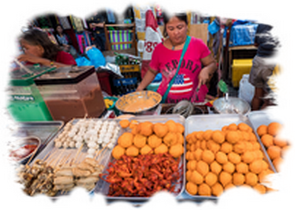 In rural areas, residents often rely on unsafe water sources like shallow wells or polluted rivers, increasing the risk of waterborne diseases. In urban areas, aging water infrastructure leads to leakages and wastage, putting additional pressure on water resources. The question of whether tap water in the Philippines is safe to drink is a common concern. Generally, tap water from municipal sources is not considered safe for consumption. While water in the Manila Metropolitan Area meets international safety standards, there is no guarantee that the pipes in individual buildings or along the distribution network are free from contaminants. It is recommended to err on the side of caution and only drink tap water if it has been properly filtered or boiled. Outside of the Manila Metropolitan Area, it is advisable to avoid drinking tap water altogether. Many residents opt to purchase water from vendors who provide filtered and purified water in 18-liter jugs. Additionally, distilled water is readily available for purchase at most grocery stores. Prioritizing the safety of your drinking water is essential to safeguarding your health and well-being in a country where access to clean water can be a challenge. The food in the Philippines is generally safe, but it is important to take precautions.
In rural areas, residents often rely on unsafe water sources like shallow wells or polluted rivers, increasing the risk of waterborne diseases. In urban areas, aging water infrastructure leads to leakages and wastage, putting additional pressure on water resources. The question of whether tap water in the Philippines is safe to drink is a common concern. Generally, tap water from municipal sources is not considered safe for consumption. While water in the Manila Metropolitan Area meets international safety standards, there is no guarantee that the pipes in individual buildings or along the distribution network are free from contaminants. It is recommended to err on the side of caution and only drink tap water if it has been properly filtered or boiled. Outside of the Manila Metropolitan Area, it is advisable to avoid drinking tap water altogether. Many residents opt to purchase water from vendors who provide filtered and purified water in 18-liter jugs. Additionally, distilled water is readily available for purchase at most grocery stores. Prioritizing the safety of your drinking water is essential to safeguarding your health and well-being in a country where access to clean water can be a challenge. The food in the Philippines is generally safe, but it is important to take precautions.  Many people in the country cannot afford refrigerators, so they purchase food items on a daily use basis, which may sometimes last for more than a day. In rural areas and traditional households, root cellars are a common sight. These underground storage spaces provide a cool and dark environment that is ideal for storing root crops such as potatoes, sweet potatoes, carrots, and onions. By controlling temperature and humidity, root cellars can extend the shelf life of these staples, ensuring a consistent food supply throughout the year. Pickling and fermentation are age-old techniques used to preserve fruits and vegetables in the Philippines. From the popular pickled papaya to the tangy burong mangga (fermented green mangoes), Filipinos have perfected the art of turning seasonal produce into long-lasting delicacies. Eggs are typically not refrigerated in the Philippines, but this is not usually a problem as they are fresh from the farm and not washed. Food storage in the Philippines is a blend of traditional wisdom, cultural heritage, and modern innovation. While street food is a common sight and generally safe to eat, it is important to choose vendors who sell the cleanest and best-looking food.
Many people in the country cannot afford refrigerators, so they purchase food items on a daily use basis, which may sometimes last for more than a day. In rural areas and traditional households, root cellars are a common sight. These underground storage spaces provide a cool and dark environment that is ideal for storing root crops such as potatoes, sweet potatoes, carrots, and onions. By controlling temperature and humidity, root cellars can extend the shelf life of these staples, ensuring a consistent food supply throughout the year. Pickling and fermentation are age-old techniques used to preserve fruits and vegetables in the Philippines. From the popular pickled papaya to the tangy burong mangga (fermented green mangoes), Filipinos have perfected the art of turning seasonal produce into long-lasting delicacies. Eggs are typically not refrigerated in the Philippines, but this is not usually a problem as they are fresh from the farm and not washed. Food storage in the Philippines is a blend of traditional wisdom, cultural heritage, and modern innovation. While street food is a common sight and generally safe to eat, it is important to choose vendors who sell the cleanest and best-looking food.
Animals, Snakes and Insects
Animals
The Philippines is home to a variety of dangerous animals, with saltwater crocodiles and rabies-infected dogs being among the most significant threats to human safety.  Saltwater crocodiles, known locally as "buwaya," are the largest living reptiles in the world and can grow up to 7 meters in length. These apex predators are found in coastal areas, mangrove swamps, and freshwater rivers, particularly in regions like Palawan, Mindanao, and the Agusan Marsh. Saltwater crocodiles are highly aggressive and territorial, capable of attacking humans with little provocation. Fatal encounters, though rare, do occur, especially in rural areas where humans and crocodiles share habitats. Rabies, on the other hand, poses a more widespread and insidious threat. The Philippines has one of the highest rates of human rabies cases in Southeast Asia, with dogs being the primary carriers of the virus. Stray dogs, which are very common in urban and rural areas, often lack vaccination and can transmit rabies through bites or scratches. Rabies is a viral disease that attacks the central nervous system, leading to severe neurological symptoms and, if untreated, almost certain death. The disease is particularly dangerous because symptoms can take weeks or even months to appear, by which time it is often too late for effective treatment.
Saltwater crocodiles, known locally as "buwaya," are the largest living reptiles in the world and can grow up to 7 meters in length. These apex predators are found in coastal areas, mangrove swamps, and freshwater rivers, particularly in regions like Palawan, Mindanao, and the Agusan Marsh. Saltwater crocodiles are highly aggressive and territorial, capable of attacking humans with little provocation. Fatal encounters, though rare, do occur, especially in rural areas where humans and crocodiles share habitats. Rabies, on the other hand, poses a more widespread and insidious threat. The Philippines has one of the highest rates of human rabies cases in Southeast Asia, with dogs being the primary carriers of the virus. Stray dogs, which are very common in urban and rural areas, often lack vaccination and can transmit rabies through bites or scratches. Rabies is a viral disease that attacks the central nervous system, leading to severe neurological symptoms and, if untreated, almost certain death. The disease is particularly dangerous because symptoms can take weeks or even months to appear, by which time it is often too late for effective treatment.
Snakes
Snuggled within the lush landscapes of the islands including the water, lurk some of the world's most dangerous snakes. The Philippines is home to a variety of venomous serpents that command respect and caution.  Let's look into the world of these venomous snakes and understand the risks they present. First thing to be aware of, is that the Philippines only possesses one type of anti-venom and it is for the cobra only! This is mainly because the most prevalent snake bites are from the Philippine Cobra (the second most deadly snake in the world). This snake kills and is present in many areas, such as farms and rice paddies, where humans also exist. There are an estimates that there are over thirteen thousand snake bite in the Philippines each year and out of those, five hundred fifty resulted in death. Most from cobras. The symptoms of a venomous snake bite can vary depending on factors such as the snake species, the amount of venom injected, and the victim's health condition.
Let's look into the world of these venomous snakes and understand the risks they present. First thing to be aware of, is that the Philippines only possesses one type of anti-venom and it is for the cobra only! This is mainly because the most prevalent snake bites are from the Philippine Cobra (the second most deadly snake in the world). This snake kills and is present in many areas, such as farms and rice paddies, where humans also exist. There are an estimates that there are over thirteen thousand snake bite in the Philippines each year and out of those, five hundred fifty resulted in death. Most from cobras. The symptoms of a venomous snake bite can vary depending on factors such as the snake species, the amount of venom injected, and the victim's health condition.  Common symptoms may include localized pain, swelling, discoloration, nausea, vomiting, and difficulty breathing. Snake venom is a mixture of peptides and proteins that evolved to disrupt physiological pathways in a prey item but also severely affects humans during defensive snakebites. The first step in mitigating the risks of venomous snake bites is being able to identify these snakes accurately. Characteristics such as triangular-shaped heads, vertical pupils, and specialized heat-sensing pits can often distinguish venomous snakes from non-venomous ones. However, relying solely on these features can be misleading. Snake bites can occur in various environments, including forests, grasslands, mangroves, the oceans and other waterways, and even in urban areas. Preventing venomous snake bites relies on a combination of awareness and precautionary measures. Individuals venturing into snake habitats should always wear appropriate footwear and clothing, avoid walking in tall grass or underbrush, use a bamboo walking stick to use as defense if a snake surprises you and use a flashlight when moving around at night. Additionally, carrying a snakebite kit containing bandages, antiseptics, and other first aid supplies can be beneficial also. Remember... The vast majority of snakes on the Philippine Islands are harmless, and almost all snakes will actively avoid interaction with humans if possible!
Common symptoms may include localized pain, swelling, discoloration, nausea, vomiting, and difficulty breathing. Snake venom is a mixture of peptides and proteins that evolved to disrupt physiological pathways in a prey item but also severely affects humans during defensive snakebites. The first step in mitigating the risks of venomous snake bites is being able to identify these snakes accurately. Characteristics such as triangular-shaped heads, vertical pupils, and specialized heat-sensing pits can often distinguish venomous snakes from non-venomous ones. However, relying solely on these features can be misleading. Snake bites can occur in various environments, including forests, grasslands, mangroves, the oceans and other waterways, and even in urban areas. Preventing venomous snake bites relies on a combination of awareness and precautionary measures. Individuals venturing into snake habitats should always wear appropriate footwear and clothing, avoid walking in tall grass or underbrush, use a bamboo walking stick to use as defense if a snake surprises you and use a flashlight when moving around at night. Additionally, carrying a snakebite kit containing bandages, antiseptics, and other first aid supplies can be beneficial also. Remember... The vast majority of snakes on the Philippine Islands are harmless, and almost all snakes will actively avoid interaction with humans if possible!
Insects
The Philippines, with its tropical climate and diverse ecosystems, is home to a variety of dangerous insects that pose significant risks to humans. Among the most notorious are mosquitoes, 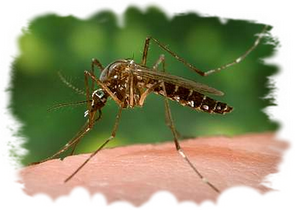 which are vectors for deadly diseases such as dengue fever, malaria, and chikungunya. The Aedes aegypti mosquito, in particular, is responsible for spreading dengue, a viral infection that causes high fever, severe joint and muscle pain, and in extreme cases, hemorrhagic fever or death. Dengue is a major public health concern in the Philippines, with outbreaks occurring annually, especially during the rainy season when stagnant water provides ideal breeding grounds for mosquitoes. Malaria, transmitted by the Anopheles mosquito, is less common but still prevalent in remote areas, particularly in Mindanao and Palawan. These diseases highlight the importance of mosquito control measures, such as using insect repellent. Another dangerous insect in the Philippines is the centipede, particularly the giant red-headed centipede. This large, aggressive arthropod can grow up to 20 centimeters in length and delivers a painful bite with its venomous pincers. While its venom is rarely fatal to humans, it can cause intense pain, swelling, fever, and in some cases, allergic reactions or secondary infections.
which are vectors for deadly diseases such as dengue fever, malaria, and chikungunya. The Aedes aegypti mosquito, in particular, is responsible for spreading dengue, a viral infection that causes high fever, severe joint and muscle pain, and in extreme cases, hemorrhagic fever or death. Dengue is a major public health concern in the Philippines, with outbreaks occurring annually, especially during the rainy season when stagnant water provides ideal breeding grounds for mosquitoes. Malaria, transmitted by the Anopheles mosquito, is less common but still prevalent in remote areas, particularly in Mindanao and Palawan. These diseases highlight the importance of mosquito control measures, such as using insect repellent. Another dangerous insect in the Philippines is the centipede, particularly the giant red-headed centipede. This large, aggressive arthropod can grow up to 20 centimeters in length and delivers a painful bite with its venomous pincers. While its venom is rarely fatal to humans, it can cause intense pain, swelling, fever, and in some cases, allergic reactions or secondary infections. 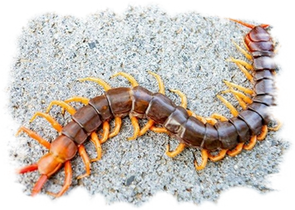 Encounters with these centipedes are common in rural and forested areas, where they hide under rocks, logs, or leaf litter. Similarly, certain species of ants, such as the fire ant, can deliver painful stings that result in itching, swelling, and, in rare cases, severe allergic reactions. Fire ants are often found in agricultural areas and can attack in large numbers if their nests are disturbed. The Philippines is also home to venomous spiders, such as the Philippine tarantula, which, while not typically life-threatening, can cause painful bites and localized reactions. Additionally, the country has its share of stinging insects like wasps and bees, which can be dangerous to individuals with allergies, as their stings may trigger anaphylactic shock. These insects are often found in gardens, forests, and even urban areas, making encounters relatively common. Overall, the presence of dangerous insects in the Philippines underscores the need for awareness and precautionary measures, however if safe-guards are enacted and repellent is used to reduce your risk to the mosquito bites, your chances of getting ill from these pests are greatly reduced.
Encounters with these centipedes are common in rural and forested areas, where they hide under rocks, logs, or leaf litter. Similarly, certain species of ants, such as the fire ant, can deliver painful stings that result in itching, swelling, and, in rare cases, severe allergic reactions. Fire ants are often found in agricultural areas and can attack in large numbers if their nests are disturbed. The Philippines is also home to venomous spiders, such as the Philippine tarantula, which, while not typically life-threatening, can cause painful bites and localized reactions. Additionally, the country has its share of stinging insects like wasps and bees, which can be dangerous to individuals with allergies, as their stings may trigger anaphylactic shock. These insects are often found in gardens, forests, and even urban areas, making encounters relatively common. Overall, the presence of dangerous insects in the Philippines underscores the need for awareness and precautionary measures, however if safe-guards are enacted and repellent is used to reduce your risk to the mosquito bites, your chances of getting ill from these pests are greatly reduced.
Understanding the Philippine Sun
The Philippines is renowned for its breathtaking beaches and year-round sunshine. The warmth of the sun not only defines this tropical paradise but also provides energy, vitality, and joy to its people. However, amidst its beauty, there is a potential danger that must be respected and understood, especially visitors from northern countries. Located near the equator, the Philippines receives abundant sunlight, attracting sun worshippers and outdoor enthusiasts. While sun exposure offers benefits, excessive time in the sun can lead to sunburn, premature aging, and an increased risk of skin cancer. The intense tropical sun, combined with high humidity levels, increases the risk of sun-related ailments, making sun protection a top priority for locals, expats, and visitors.  To safeguard against the dangers of the Philippine sun, it is crucial to take preventive measures. Here are some suggestions to help you in this endeavor: Firstly, sunscreen is essential. Apply it to all exposed parts of your body, ensuring you use a high enough SPF for your skin color. It is crucial to reapply sunscreen every two hours, particularly after swimming or sweating. Additionally, wearing protective clothing such as lightweight, long-sleeved shirts, pants, and wide-brimmed hats can help shield the skin from direct sunlight. Dark-colored, tightly woven fabrics provide better protection against harmful UV rays. Seeking shade is also essential to prevent sunstroke. Limiting outdoor activities during peak sun hours, typically between 10 a.m. and 4 p.m., when UV radiation is strongest, can reduce the risk of sun damage. Utilizing umbrellas, trees, or any shaded areas can also minimize exposure. Furthermore, wearing sunglasses with UV protection is crucial to shield the eyes from harmful rays. Prolonged UV exposure can increase the risk of cataracts and other eye conditions. Staying hydrated by drinking plenty of water, especially when spending extended periods outdoors, is also important. Dehydration can worsen the effects of sun exposure and heat related illnesses. Remember to prioritize your health and well-being by taking these precautions seriously and remember, staying hydrated does not mean consuming alcohol. Sorry Guys!
To safeguard against the dangers of the Philippine sun, it is crucial to take preventive measures. Here are some suggestions to help you in this endeavor: Firstly, sunscreen is essential. Apply it to all exposed parts of your body, ensuring you use a high enough SPF for your skin color. It is crucial to reapply sunscreen every two hours, particularly after swimming or sweating. Additionally, wearing protective clothing such as lightweight, long-sleeved shirts, pants, and wide-brimmed hats can help shield the skin from direct sunlight. Dark-colored, tightly woven fabrics provide better protection against harmful UV rays. Seeking shade is also essential to prevent sunstroke. Limiting outdoor activities during peak sun hours, typically between 10 a.m. and 4 p.m., when UV radiation is strongest, can reduce the risk of sun damage. Utilizing umbrellas, trees, or any shaded areas can also minimize exposure. Furthermore, wearing sunglasses with UV protection is crucial to shield the eyes from harmful rays. Prolonged UV exposure can increase the risk of cataracts and other eye conditions. Staying hydrated by drinking plenty of water, especially when spending extended periods outdoors, is also important. Dehydration can worsen the effects of sun exposure and heat related illnesses. Remember to prioritize your health and well-being by taking these precautions seriously and remember, staying hydrated does not mean consuming alcohol. Sorry Guys!
Weather
The Philippines boasts a predominantly tropical climate, characterized by high temperatures and humidity levels year-round. The country experiences two distinct seasons: the wet season, also known as the southwest monsoon, and the dry season, also known as the northeast monsoon. 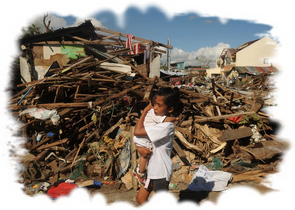 During the wet season, which typically lasts from June to November, the southwest monsoon brings heavy rainfall and frequent thunderstorms to most parts of the country. This period also coincides with the occurrence of tropical cyclones, locally known as typhoons, which can cause significant damage through strong winds, torrential rains, and storm surges. The eastern regions, particularly those facing the Pacific Ocean, are most vulnerable to these weather disturbances, necessitating caution during this time. Conversely, the dry season, spanning from December to May, is characterized by stable weather conditions with minimal rainfall and clear skies. This period is ideal for outdoor activities and beach vacations, attracting tourists from around the world to the country's renowned island destinations such as Boracay, Palawan, and Bohol. In addition to the general wet and dry seasons, the Philippines experiences localized weather phenomena due to its diverse topography. Mountainous regions often have cooler temperatures and higher precipitation levels, while coastal areas are prone to sea breezes and occasional squalls. The coolest season occurs between late November and goes thru to the first part of March, with January being the most pleasant time of the year.
During the wet season, which typically lasts from June to November, the southwest monsoon brings heavy rainfall and frequent thunderstorms to most parts of the country. This period also coincides with the occurrence of tropical cyclones, locally known as typhoons, which can cause significant damage through strong winds, torrential rains, and storm surges. The eastern regions, particularly those facing the Pacific Ocean, are most vulnerable to these weather disturbances, necessitating caution during this time. Conversely, the dry season, spanning from December to May, is characterized by stable weather conditions with minimal rainfall and clear skies. This period is ideal for outdoor activities and beach vacations, attracting tourists from around the world to the country's renowned island destinations such as Boracay, Palawan, and Bohol. In addition to the general wet and dry seasons, the Philippines experiences localized weather phenomena due to its diverse topography. Mountainous regions often have cooler temperatures and higher precipitation levels, while coastal areas are prone to sea breezes and occasional squalls. The coolest season occurs between late November and goes thru to the first part of March, with January being the most pleasant time of the year.
Conclusion:
The Philippines, with its stunning landscapes and vibrant culture, is a destination like no other. However, it’s important to acknowledge the potential dangers that travelers and residents may face, such as natural disasters, health risks, and safety concerns in certain areas. From typhoons, earthquakes, crowded urban environments, dangerous animals, to being aware of these risks is crucial for staying safe. That said, it’s equally important to remember that the likelihood of experiencing these dangers is relatively low if proper precautions are taken. By planning ahead, and following this and local advice, you can significantly reduce any danger risks. The Philippines remains a beautiful and welcoming country, and with the right preparation, your experience is far more likely to be filled with unforgettable adventures rather than mishaps. So, embrace the journey!
